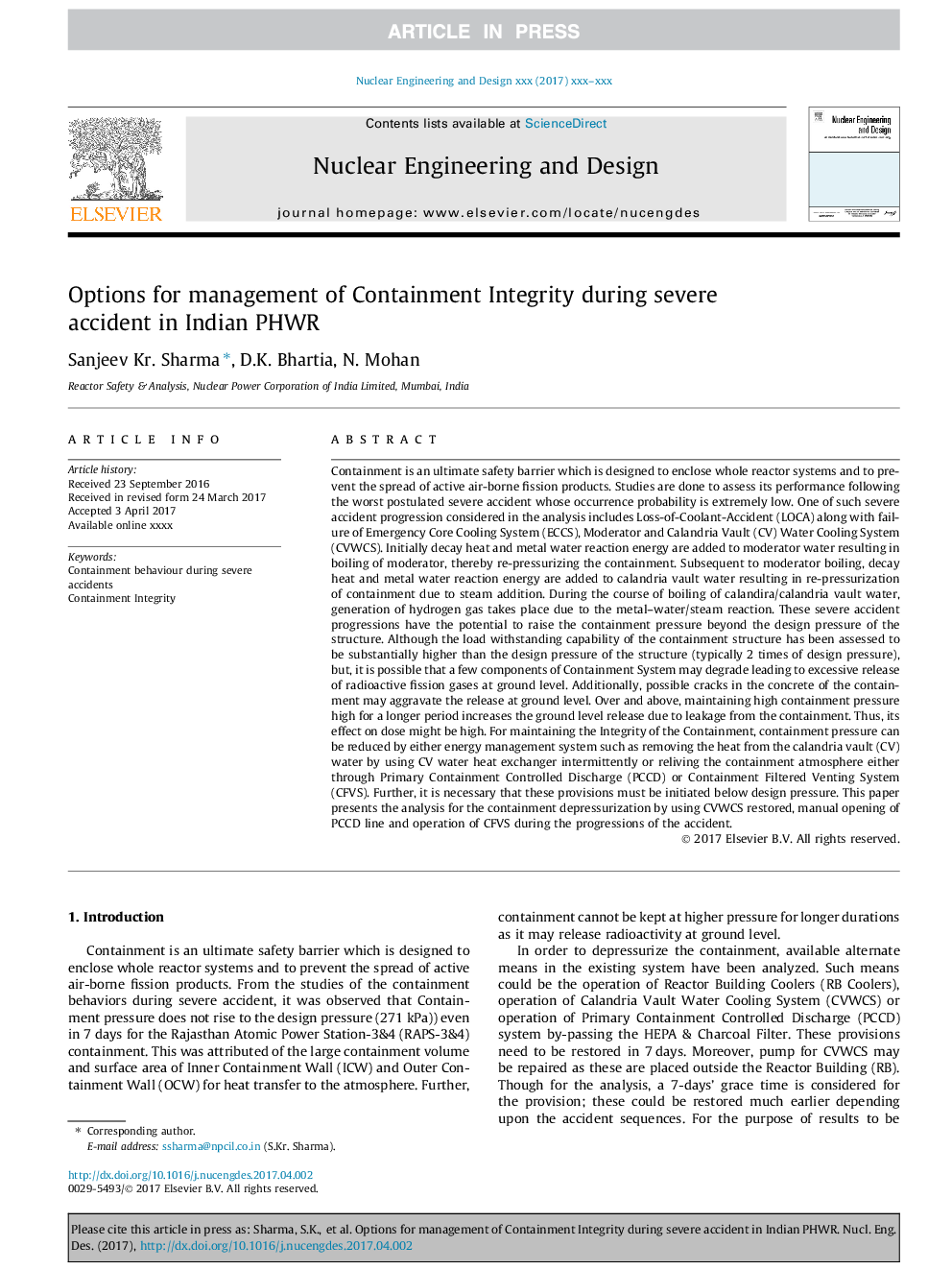| کد مقاله | کد نشریه | سال انتشار | مقاله انگلیسی | نسخه تمام متن |
|---|---|---|---|---|
| 4925457 | 1431398 | 2017 | 8 صفحه PDF | دانلود رایگان |
عنوان انگلیسی مقاله ISI
Options for management of Containment Integrity during severe accident in Indian PHWR
دانلود مقاله + سفارش ترجمه
دانلود مقاله ISI انگلیسی
رایگان برای ایرانیان
موضوعات مرتبط
مهندسی و علوم پایه
مهندسی انرژی
مهندسی انرژی و فناوری های برق
پیش نمایش صفحه اول مقاله

چکیده انگلیسی
Containment is an ultimate safety barrier which is designed to enclose whole reactor systems and to prevent the spread of active air-borne fission products. Studies are done to assess its performance following the worst postulated severe accident whose occurrence probability is extremely low. One of such severe accident progression considered in the analysis includes Loss-of-Coolant-Accident (LOCA) along with failure of Emergency Core Cooling System (ECCS), Moderator and Calandria Vault (CV) Water Cooling System (CVWCS). Initially decay heat and metal water reaction energy are added to moderator water resulting in boiling of moderator, thereby re-pressurizing the containment. Subsequent to moderator boiling, decay heat and metal water reaction energy are added to calandria vault water resulting in re-pressurization of containment due to steam addition. During the course of boiling of calandira/calandria vault water, generation of hydrogen gas takes place due to the metal-water/steam reaction. These severe accident progressions have the potential to raise the containment pressure beyond the design pressure of the structure. Although the load withstanding capability of the containment structure has been assessed to be substantially higher than the design pressure of the structure (typically 2 times of design pressure), but, it is possible that a few components of Containment System may degrade leading to excessive release of radioactive fission gases at ground level. Additionally, possible cracks in the concrete of the containment may aggravate the release at ground level. Over and above, maintaining high containment pressure high for a longer period increases the ground level release due to leakage from the containment. Thus, its effect on dose might be high. For maintaining the Integrity of the Containment, containment pressure can be reduced by either energy management system such as removing the heat from the calandria vault (CV) water by using CV water heat exchanger intermittently or reliving the containment atmosphere either through Primary Containment Controlled Discharge (PCCD) or Containment Filtered Venting System (CFVS). Further, it is necessary that these provisions must be initiated below design pressure. This paper presents the analysis for the containment depressurization by using CVWCS restored, manual opening of PCCD line and operation of CFVS during the progressions of the accident.
ناشر
Database: Elsevier - ScienceDirect (ساینس دایرکت)
Journal: Nuclear Engineering and Design - Volume 323, November 2017, Pages 386-393
Journal: Nuclear Engineering and Design - Volume 323, November 2017, Pages 386-393
نویسندگان
Sanjeev Kr. Sharma, D.K. Bhartia, N. Mohan,